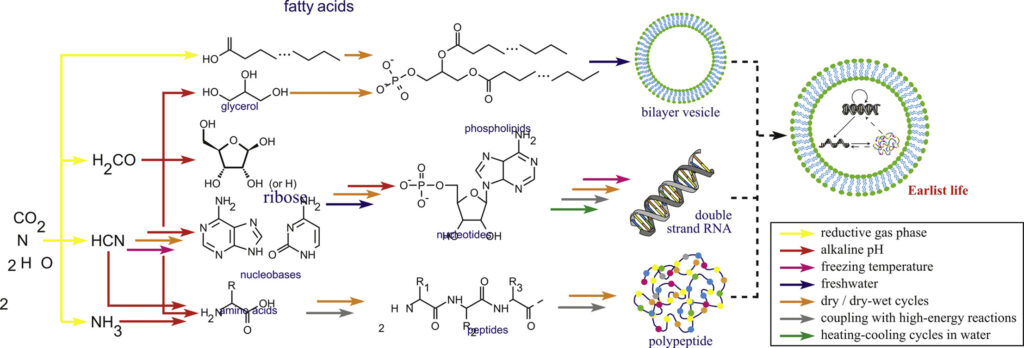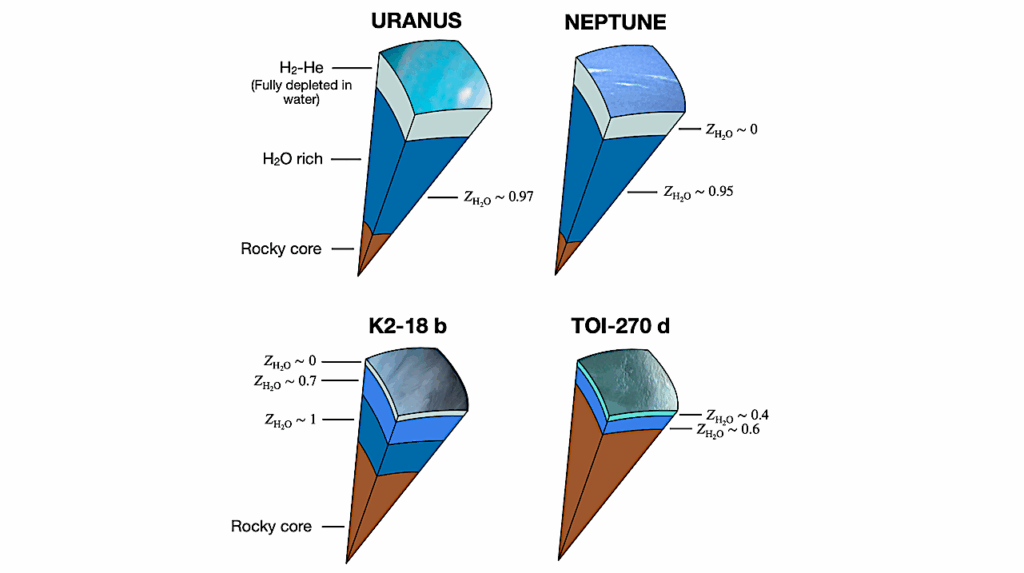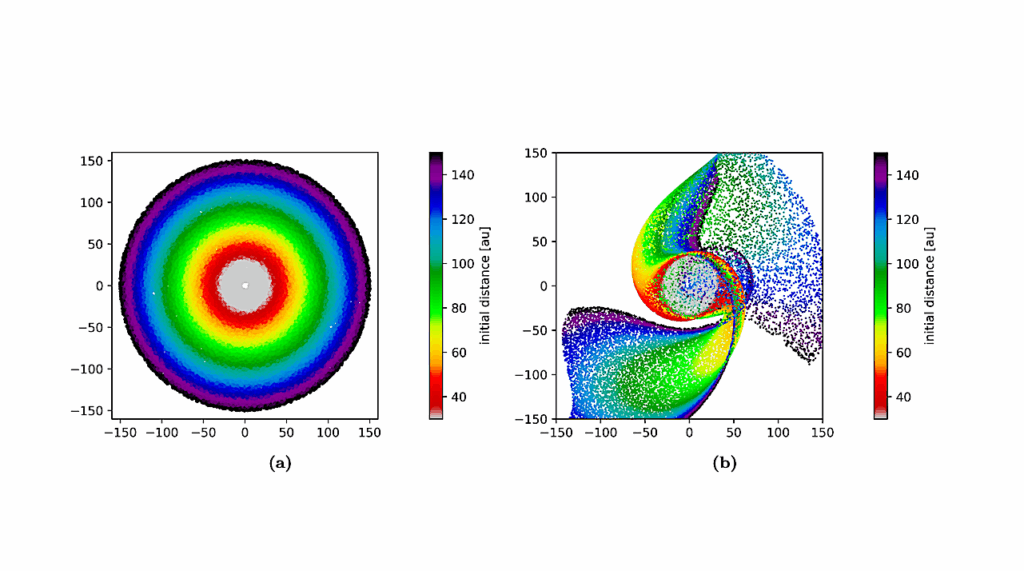Astrochemistry Associated With Planet Formation

This paper provides a brief summary and overview of the astrochemistry associated with the formation of stars and planets. It is aimed at new researchers in the field to enable them to obtain a quick overview of the landscape and key literature in this rapidly evolving area.
The journey of molecules from clouds to protostellar envelopes, disks and ultimately exoplanet atmospheres is described. The importance of the close relation between the chemistry of gas and ice and the physical structure and evolution of planet-forming disks, including the growth and drift of grains and the locking up of elements at dust traps, is stressed. Using elemental abundance ratios like C/O, C/N, O/H in exoplanetary atmospheres to link them to their formation sites is therefore not straightforward.
Interesting clues come from meteorites and comets in our own solar system, as well as from the composition of Earth. A new frontier is the analysis of the kinematics of molecular lines to detect young planets in disks. A number of major questions to be addressed in the coming years are formulated, and challenges and opportunities are highlighted.
Ewine F. van Dishoeck (Leiden Observatory, Leiden University, NL), Edwin A. Bergin (Univ. of Michigan, USA)
Comments: 11 pages, 5 figures, to appear as a book chapter in ExoFrontiers: Big questions in exoplanetary science, Ed. N Madhusudhan (Bristol: IOP Publishing Ltd) AAS-IOP ebooks
Subjects: Earth and Planetary Astrophysics (astro-ph.EP); Astrophysics of Galaxies (astro-ph.GA)
Cite as: arXiv:2012.01472 [astro-ph.EP] (or arXiv:2012.01472v1 [astro-ph.EP] for this version)
Submission history
From: Ewine F. van Dishoeck
[v1] Wed, 2 Dec 2020 19:23:01 UTC (10,733 KB)
https://arxiv.org/abs/2012.01472
Astrobiology, Astrochemistry,








